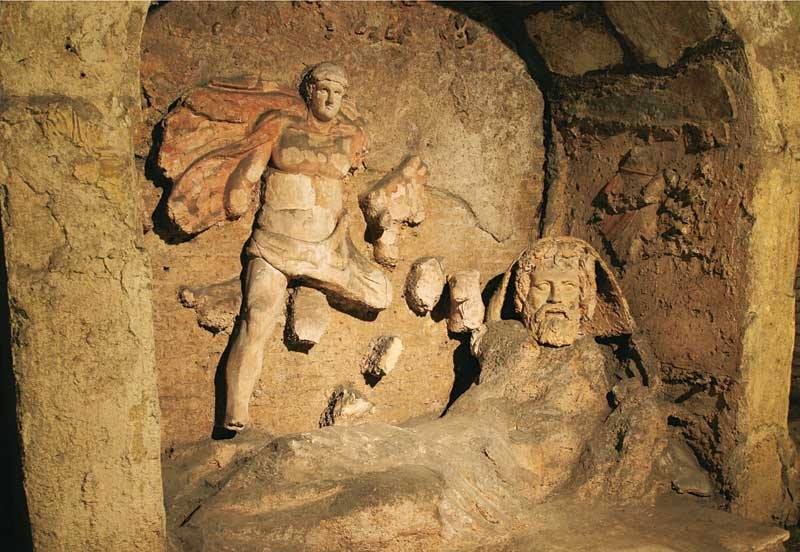Oceanus-Saturn of Santa Prisca
The full article is reserved for our members.
Log in or create a free account to access the entire site.
Ferrua, 12f. See fig. 131.
Reclining Oceanus-Saturnus, the lower part of whose body is covered by a red-blue cloak. The naked breast has a red colour. Behind his shoulders the remnants of a blue velum are visible, which he has wrapped over his head. The right guilded hand hold a part of a stick, probably an oar. Both arms are lacking. In his left shoulder a leaden tube is visible, which probably leads to the upraised left hand in which he held a patera.
A more detailed description of this statue and its significance has been given in M. J. Vermasere…
